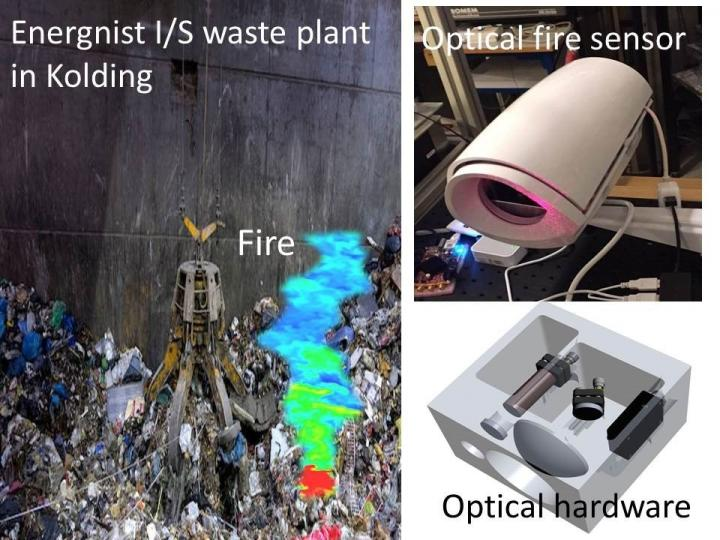
Image Credit: Mikael Lassen, Danish Fundamental Metrology A/S
A prototype laser-based system could provide an efficient and inexpensive means of detecting fires in dusty, harsh environments like industrial facilities, and with further development, may spot fires more than a kilometer away.
The system perceives fires or variations in temperature by using inexpensive optical components to create and detect changes in a speckle pattern, hence its name, speckle pattern analysis.
Speckle pattern analysis is a completely new solution for detecting fire and heat changes. It is not only fast and relatively low cost but also works in large, harsh environments.
Mikael Lassen, Senior scientist, Danish Fundamental Metrology A/S
"Our new system makes it possible to detect fire in dusty areas prone to fires, where current systems show limited performance or can't operate," Lassen added. "It could be used in a variety of industries such as waste management facilities, power supply plants, food processing factories, and textile factories."
The majority of fire detection and prevention systems in use today don’t work well for large areas such as industrial sites; smoke detectors are often set off by dust and pollution, and can’t sense the submicron particulate matter given off in the initial stages of a fire.
Standard laser-based fire detection systems are often based on measuring the variation of optical signal amplitude but are also sensitive to vibrations, and struggle to pinpoint fire through dust and steam. Sunlight and artificial light can affect other sensors that detect radiation given off by flames, as can welding or other non-dangerous sources, leading to false alarms.
This new system aims to identify small temperature increases to provide early and reliable fire detection. The research team’s novel optical approach measures dynamic speckle patterns; these changing patterns are produced by interference when laser light hits a rough surface. When a fire occurs, the heat flow it produces makes the laser beam jitter in a way that is detectable when the laser light is reflected to a detector at the laser source.
“It is not the amount of light or its wavelength that is used for detecting fire, but how the refractive index randomly fluctuates due to heat convection from the fire,” state the researchers, in Applied Optics. “In practical terms, this means that light obstruction from ambient dust particles will not be a problem as long as a small fraction of the light is detected and that fires without visible flames can still be detected.”
The laser system consists of a Linux-based Red Pitaya system, a 650 nm laser diode, and a positive-intrinsic-negative photo-detector. As laser light travels through the monitored area, it reflects off a retroreflector generating a speckle pattern. Every three seconds, time traces and the frequency noise spectra are measured, and eight descriptors are reasoned to identify a potential fire.
Machine learning and statistics were utilized to analyze noise patterns of the energetic speckle pattern created by the laser light; the presence of broadband white noise indicated a fire, while noise sources confined to a narrow range of wavelengths could be eliminated, most likely attributable to mechanical influences such as vibration.
Researchers tested a remotely operated proof-of-concept prototype in order to validate their new detection system; their testing site was the Energnist I/S waste plant in Kolding, Denmark, a particularly harsh, dusty and noisy environment which experiences three to four false alarms a month.
The system detected fires with an accuracy of 91%, which is a very good result taking into account the harsh environment. Because it doesn't rely on the absolute intensity of the light beam, it is robust to general attenuation due to dust and smoke."
Mikael Lassen, Senior scientist, Danish Fundamental Metrology A/S
Further product development will transition the system from a prototype to the final product; this will involve completing the housing, optimizing electronic and algorithms and designing the user interface. The team - which included researchers from Elotec A/S in Norway, LAP-Sikkerhed Asp and the Danish Institute of Fires and Security, both in Denmark – aim to upgrade the optical detector and laser to a more powerful one to improve sensitivity and widen the sensing range to 500-600 meters and eventually to over 1 kilometer.
Disclaimer: The views expressed here are those of the author expressed in their private capacity and do not necessarily represent the views of AZoM.com Limited T/A AZoNetwork the owner and operator of this website. This disclaimer forms part of the Terms and conditions of use of this website.